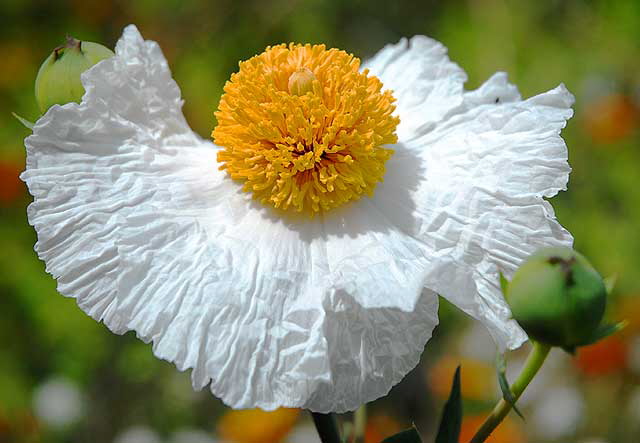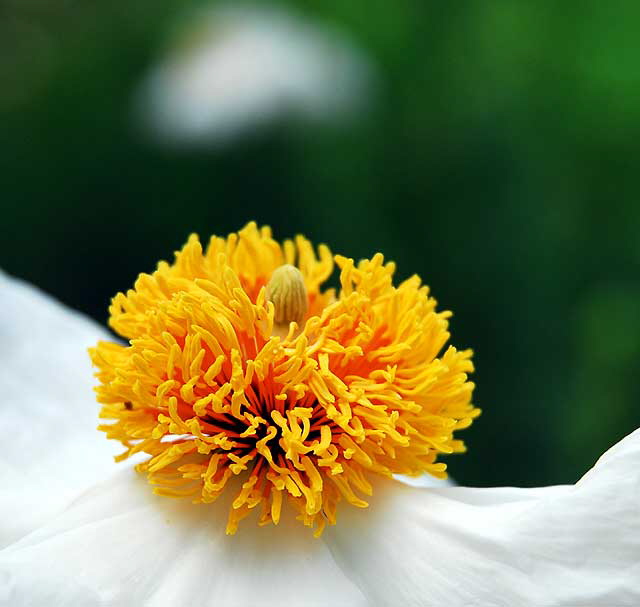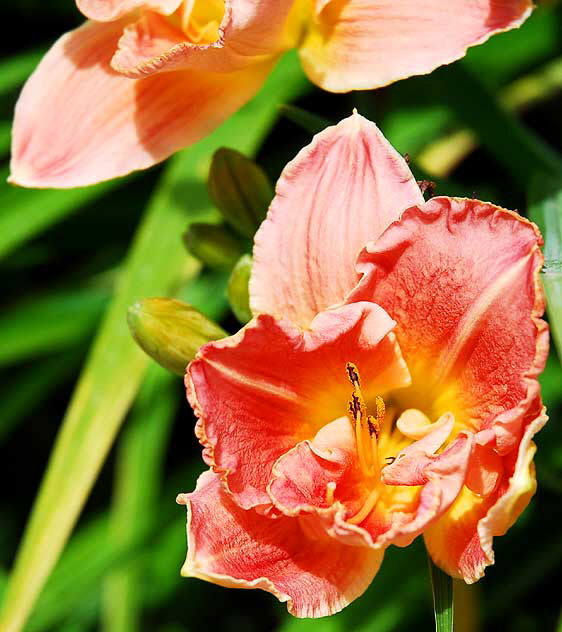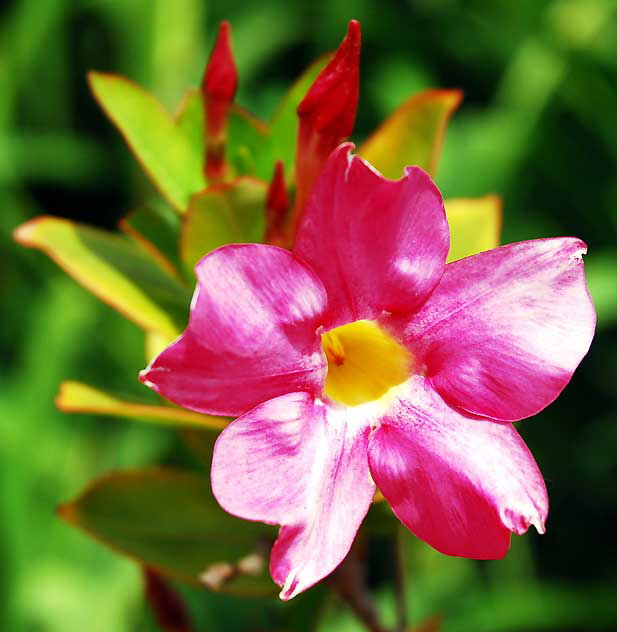|
|
|||||
|
|
|||||
|
Counter added Sunday, March 25, 2007 -11:00 am Pacific Time
|
|||||
|
|
|
Saturday, May 17, 2008 – The Oddest Poppy In bloom at the edge of the Malibu lagoon, Coulter's Matilija poppy (Romneya coulteri) – also known as California tree poppy, mission poppy, and fried-egg plant – |
 |
 |
|
The basics: The Matilija poppy or tree poppy (Romneya Harvey) is a poppy of Southern California and Northern Mexico, belonging to the poppy family (Papaveraceae). They are perennial subshrub with a woody stem. They may grow to a height of 2.5 meters (8 ft) and a width of 1 m (35 in), with the flowers up to 13 cm (5 in) across. The silvery green leaves are deeply cut, with a small fringe of hairs at the margin. They are notable for their large white flowers with intense yellow centers, blooming in summer. These flowers prefer a warm, sunny spot and fertile soil with good water drainage. They are not easily grown, and also difficult to remove. The genus includes only two species: Coulter's Matilija poppy (Romneya coulteri) and Bristly Matilija poppy (Romneya trichocalyx) – but some consider this a variant Romneya coulteri var. trichocalyx From calflora.net: The showy white flowers are the largest of any plant native to California, and look like fried eggs. There are 5-8 per stem and the six petals are usually crinkled with many yellow stamens and a single large pistil. The three sepals are glabrous, which differentiates it from the other Romneya species, trichocalyx, which has bristly or appressed-hairy sepals. The leaves are alternate and have 3-5 main segments which are somewhat dentate or cleft. Matilija poppy inhabits dry washes and canyons below 4000' in coastal sage scrub and chaparral away from the immediate coast. It is an occasional resident in the Peninsular Ranges, but is more common in the Santa Ana Mountains to San Diego County, being found also in the Santa Monica Mountains, where it was probably begun by transplanting. It blooms from May to July. The name Matilija (pronounced ma-TIL-i-ha or ma-til-EE-ha) appears to be of Chumash origin, and I have seen one source that relates the name to a Chief Matilija who lived in Ventura County. The name is used also for Matilija Canyon above the community of Ojai and Matilija Creek in the Los Padres National Forest. From alchemy-works.com: This magic herb is named for a Chumash Indian leader of the resistance against the Spaniards, who were capturing Indians and forcing them to work for a local mission. Thus it is a good magically for protection. There is also a story that it grew over the bodies of two Chumash lovers, one of whom died of wounds inflicted by the enslaving Spaniards. This makes it appropriate for guarding the dead. Now you know. Everything else nearby just seemed ordinary. |
 |
||
 |
||
|
If you wish to use any of these photos for commercial purposes I assume you'll discuss that with me. And should you choose to download any of these images and use them invoking the "fair use" provisions of the Copyright Act of 1976, please provide credit, and, on the web, a link back this site. Technical Note: Photographs after March 3, 2008, were taken with a Nikon D200 – or a Nikon D70 when noted. All previous photographs were taken with the D70. The lenses used are (1) AF-S Nikkor 18-70 mm 1:35-4.5G ED, or (2) AF Nikkor 70-300 mm telephoto, or (3) AF-S DX Zoom-Nikkor 55-200 mm f/4-5.6G ED. Photography here is modified for web posting using Adobe Photoshop 7.0. The earliest photography in the archives was done with a Sony Mavica digital still camera (MVC-FD-88) with built-in digital zoom. |
| [The Oddest Poppy] |
|
All text and photos, unless otherwise noted, Copyright © 2003, 2004, 2005, 2006, 2007, 2008, 2009, 2010 - Alan M. Pavlik |
